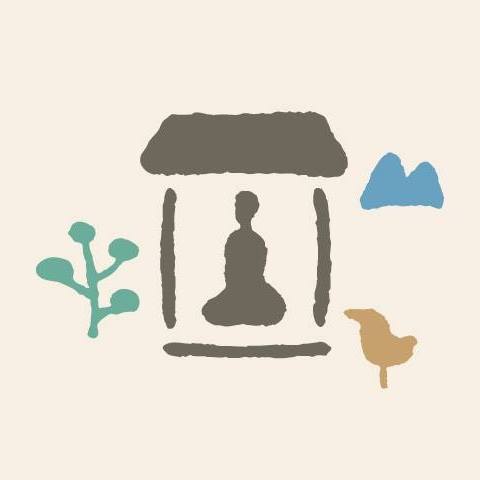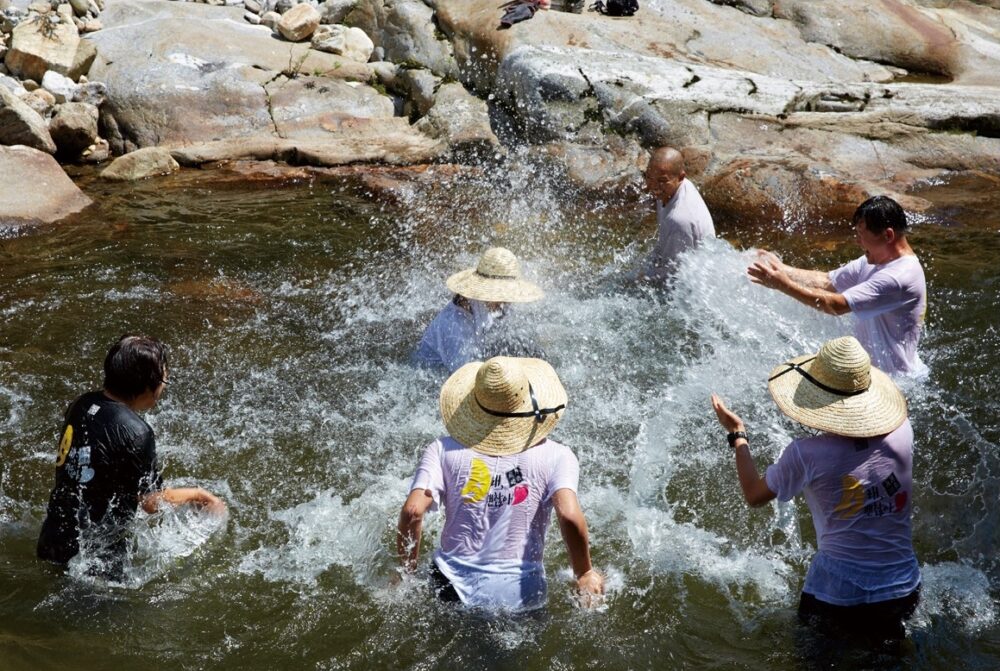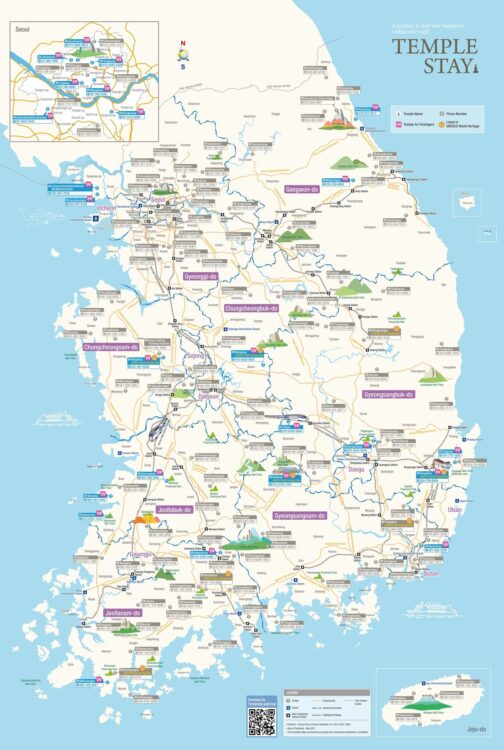Templestay

Introduction
The Templestay program in Korea first started in 2002 just in time for the World Cup. The program was started to give people an opportunity to experience Korean Buddhist culture, which is an integral part of Korea’s past and present. Originally, there were 32 temples that participated in the program. By 2008, that number had grown to 87 temples. And by 2012, the Templestay program consisted of some 120 temples. As of 2022, there are 26 Templestay programs for foreign nationals. The unique feature of the program is that each province is represented in the Templestay program, which allows people to see both the cultural and scenic diversity throughout the Korean Peninsula. And in total, and over the twenty years that the Templestay program has been in existence, some 411,713 foreign nationals have participated in the program. Overall, the Templestay program has been a resounding success.
Templestay Temples
In total, there are 26 temples, as of 2022, that are regularly conducting the Templestay program for foreign nationals. All provinces, excluding Jeju-do, participate in the program. And the three largest cities in Korea are well represented, as well. Here’s a list and map of the 26 temples in the Templestay Program:
4. International Seon Center (Seoul)
8. Jeondeungsa Temple (Incheon)
9. Lotus Lantern International Meditation Center (Incheon)
10. Bongseonsa Temple (Namyangju, Gyeonggi-do) [Currently unavailable]
11. Magoksa Temple (Gongju, Chungcheongnam-do) [Currently unavailable]
12. Geumsansa Temple (Gimje, Jeollabuk-do)
13. Naesosa Temple (Buan, Jeollabuk-do)
14. Seonunsa Temple (Gochang, Jeollabuk-do)
15. Baegyangsa Temple (Jangseong, Jeollanam-do)
16. Hwaeomsa Temple (Gurye, Jeollanam-do)
17. Mihwangsa Temple (Haenam, Jeollanam-do)
18. Naksansa Temple (Yangyang, Gangwon-do)
19. Woljeongsa Temple (Pyeongchang, Gangwon-do) [Currently unavailable]
20. Beopjusa Temple (Boeun, Chungcheongbuk-do)
21. Guinsa Temple (Danyang, Chungcheongbuk-do)
23. Bulguksa Temple (Gyeongju, Gyeongsangbuk-do)
24. Golgulsa Temple (Gyeongju, Gyeongsangbuk-do)
25. Jikjisa Temple (Gimcheon, Gyeongsangbuk-do)
26. Haeinsa Temple (Hapcheon, Gyeongsangnam-do) [Currently unavailable]
Various Templestay Programs
There are various programs that each of the 26 temples provide. You’ll need to look at each of the temples to find the best fit for you. Here are some of the things that temples might provide in their programs:
Opening Ceremony: Outside of your arrival and registration, the first thing you’ll do during your Templestay is the opening ceremony. This ceremony is an official ceremony that introduces the participant to monastic life. Such things as temple etiquette, bowing, and Hapjang (where the body and mind become one) are introduced.
Temple Tour: After learning a bit about monastic life, you’ll then be introduced to your environs through a temple tour. During this time, you will be guided around the temple and be given unique insight into Korean Buddhism by one of the temple’s monks.
Monastic Meal Offering – Baru Gongyang: After your tour of the temple, and a rest, you’ll then enjoy your first meal at the temple. At temples, taking food is another form of spiritual practice. The three practices that are encouraged during mealtime are austerity, equality, and silence. Silence during mealtime is kept for self-reflection, while equality is emphasized through the sharing of food. And finally, austerity is performed so as not to waste a single grain of rice.
Buddhist Ceremonial Service: During the day, Korean Buddhist temples participate in three Buddhist ceremonial services. The first occurs during pre-dawn hours, while the second happens before noon (usually around ten). The final service, and the first ceremony you’ll participate in during your stay, occurs around six or seven at night. It’s during these ceremonies that Buddhists reaffirm their faith.
The Tea Ceremony: The final activity you’ll enjoy during your first day at the temple is the tea ceremony (other activities, other than the tea ceremony can be enjoyed at Templestay programs, and they’ll be explained a bit later). It is during the tea ceremony that even more self-reflection is encouraged. Even with a simple cup of tea, everything is measured and observed like the type of leaf for the tea or the temperature of the water.
Seon Meditation: One of the first things you’ll do on the second day, besides waking up brutally early, is take part in Seon (Zen in Japan) meditation. During this time, a participant will take part in the practice of Seon meditation in the Seon meditation hall. It’s at this time, at least it’s hoped, that the participant will inch that much closer to finding their true self through samadhi.
Community Work in Korean Buddhism: One of the final activities that you’ll participate in during your stay is community work at the temple. It’s during this time that both residents and visitors to the temple help in maintaining and keeping the temple clean. This activity helps in the practice of community, self-reflection, and communing with nature.
Other Temple Stay Activities: Besides participating in a tea ceremony, there are several other activities you might take part in at any number of temples throughout Korea.
a.) One is lotus lantern making. This activity symbolizes ones sincere wish to light up the universe with wisdom and compassion, while driving away the darkness of ignorance.
b.) Another activity is participating in a Buddhist lecture. During this time, Buddhist culture will be explored and explained.
c.) Yet another is making Buddhist beads. This activity highlights the importance and centrality of self-reflection in Buddhism.
d.) And yet another activity is walking the temple grounds, which typically contains beautiful scenic views of the Korean Peninsula.
e.) Finally, Buddhist yoga or martial arts (i.e. Golgulsa Temple) can be yet another activity that can be enjoyed during your Templestay. Both activities encourage harmony between the body and the mind that can ultimately lead to enlightenment.

Temple Etiquette
If you’ve never been to a Korean Buddhist temple, or the Templestay program for that matter, you might not know what is expected of you at a temple. Like some things that are Korean, it may not be all that clear. So I thought I would share some of the things that are expected of you etiquette-wise at a Korean Buddhist temple.
Perhaps the easiest thing to figure out is what you should wear to a temple. Because a Korean Buddhist temple is a holy place for Buddhists to worship, visitors should dress appropriately, which means that your clothes should be clean, neat, and conservative. So what does this mean more broadly? It means that a person’s clothes shouldn’t be too colourful or revealing like sleeveless tops, miniskirts, or short shorts. Also, heavy make-up, strong perfumes, or excessive accessories should be avoided, as well. And bare feet inside a temple hall are not allowed.
As for a visitors behaviour, one should be both quiet and mindful of others. So it should go without saying that speaking loudly, running, shouting, singing, or playing music are off-limits. Also, one should refrain from drinking alcohol, eating meat, or smoking tobacco while on temple grounds. I know, a bit of a no-brainer, but you’d be surprised. Finally, and especially during a temple stay, men and women should avoid intimacy during their visit.
Specifically, while in a temple hall, there are things you should and shouldn’t do. One thing you shouldn’t do, unless you have permission, is to take pictures inside temple halls. At a temple hall, there are three entrances. The one in the centre is reserved for monks, while the ones to the left and right are used by temple visitors. Also, you’ll need to take off your shoes before entering a hall. When you enter the hall, and if you feel comfortable in doing it, you should bow to the Buddha with your palms together. This should be repeated when you leave the hall, as well. Worship in the centre of the hall is for monks only, so you’ll usually see groups of people to the right and left of the centre. Also, you shouldn’t lie down in the hall, have your back to the main altar, or sit in the doorway. Finally, you shouldn’t pass in front of others that are praying.
If you must, and there’s no way around them, you should pass both quietly and quickly with your palms together. If you follow all these etiquette rules, your stay at a Korean Buddhist temple should be both a fulfilling and rewarding stay.
Links
